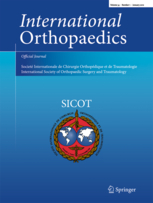
SPINE
CDA versus ACDF for clinical efficacy, cervical ROM, and adjacent segment degeneration
Int Orthop. 2014 Dec;38(12):2533-41111 patients with degenerative cervical disc disease were randomized to surgery through either cervical disc arthroplasty (CDA) or anterior cervical discectomy and fusion (ACDF). The purpose of this study was to compare clinical efficacy and cervical spine range of motion (ROM) at a minimum of 48 months after surgery. The results indicated no significant differences between groups in clinical outcome scores, although favourable spinal motion with CDA. In particular, cervical-spine ROM and ROM of the index, superior, and inferior spinal levels was better restored with CDA. Additionally, 4 patients of the ACDF group underwent adjacent segment-related reoperation. Heterotopic ossification was observed in 18 patients of the CDA group.
Unlock the full ACE Report
You have access to {0} free articles per month.Click below to unlock and view this {1}
Unlock NowCritical appraisals of the latest, high-impact randomized controlled trials and systematic reviews in orthopaedics
Access to OrthoEvidence podcast content, including collaborations with the Journal of Bone and Joint Surgery, interviews with internationally recognized surgeons, and roundtable discussions on orthopaedic news and topics
Subscription to The Pulse, a twice-weekly evidence-based newsletter designed to help you make better clinical decisions
Exclusive access to original content articles, including in-house systematic reviews, and articles on health research methods and hot orthopaedic topics
Or upgrade today and gain access to all OrthoEvidence content for just $1.99 per week.
Already have an account? Log in


Subscribe to "The Pulse"
Evidence-Based Orthopaedics direct to your inbox.
{0} of {1} free articles
Become an OrthoEvidence Premium Member. Expand your perspective with high-quality evidence.
Upgrade Now












































































